SORRIEST BUS STOPS 2021 — The Finals: Québec City vs. Staten Island
6:21 PM EDT on April 13, 2021
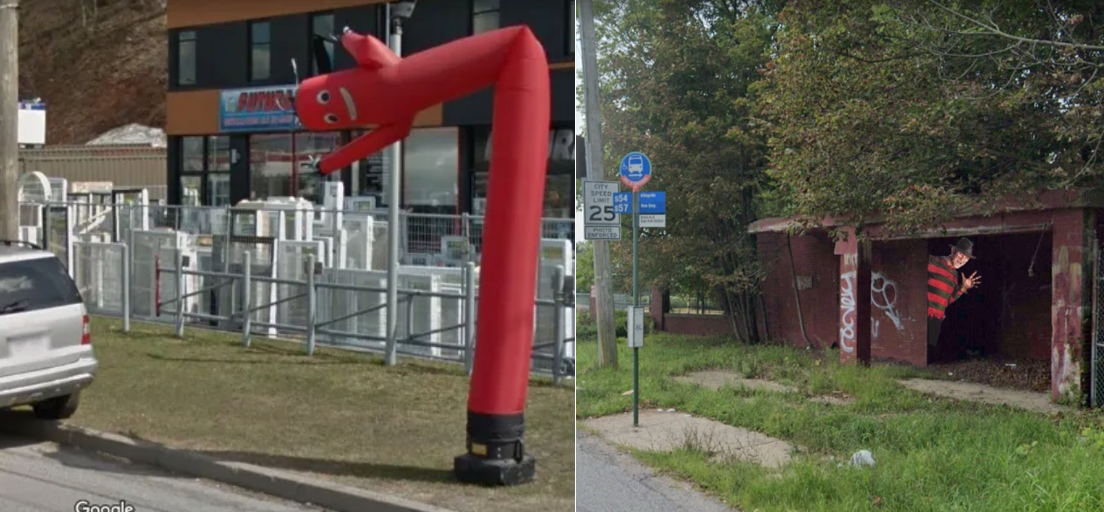

It all comes down to this.
After hundreds of nominations and 12 hard-fought battles, we're finally down to the last two sorry stops standing. And we need your help to determine which one deserves the title of the worst waiting area in North America — or should we say Amérique du Nord?
Our final two contenders, Québec City and Staten Island, N.Y., have beat out competitors from California to Massachusettes, thanks to their shocking lack of amenities like shelters and benches (or as we like to call them, basic dignities), dangerous surrounding street designs, and all-around sadness.
But experts stress that every single stop in this contest deserves a little piece of the infamy, because they're all monuments to just how badly North America fails its bus riders.
"Most transit riders are bus riders for some part of their journey — and in a lot of places, the bus is the transit system," said Mary Buchanan, senior research associate at TransitCenter and author of the report "From Sorry to Superb: Everything You Need to Know About Great Bus Stops." "But moreover, the bus stop is what people see whether they ride transit or not. When we expect riders to wait at stops like the one's we’re seeing in this contest, we're sending a message that bus riders are not a priority."
But who, exactly, is sending that message is a complicated question — and that's part of what makes bad stops so hard to address.
In the case of Québec City's Car Dealership Catastrophe, the local transit agency, Réseau de Transport de la Capitale (RTC) is directly responsible for making sure that the stop is clean, safe, mowed, and clear of snow (though as you can see from the photos below, it's not doing a great job on most counts).
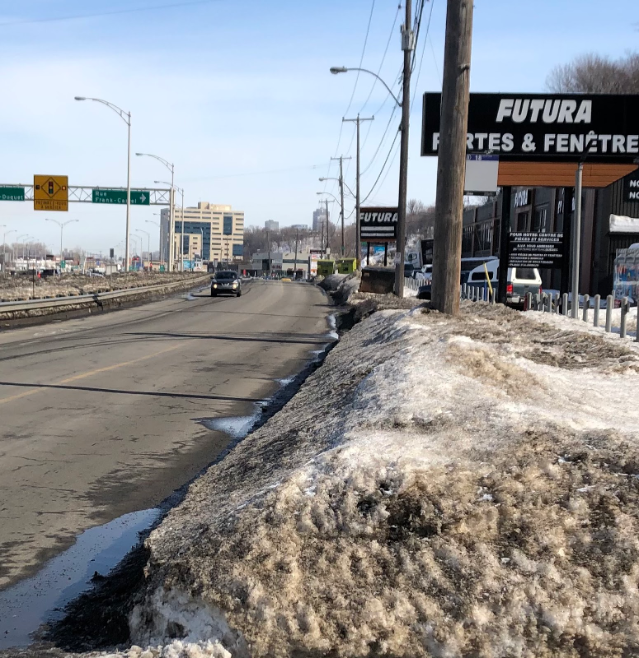
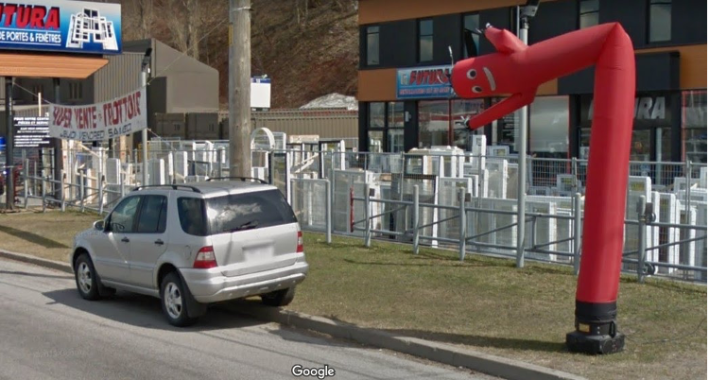
But in Staten Island, the Metropolitan Transportation Authority is technically only responsible for the bus stop sign and the stick to which it's stuck. The rest of the stop maintenance — and decisions about which stops get things like shelters, heating, streetlights, and real-time arrival information — is left up to the New York City Department of Transportation. But even bus stop expert Buchanan didn't know whether the DOT or the Parks Department is also responsible for mowing the grass — or maintaining the nightmarish hovel that earned this stop the nickname the Staten Island Murder Shed.
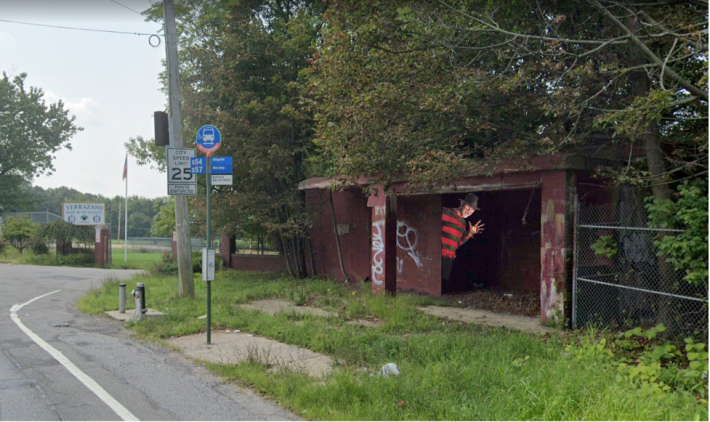
"It's definitely a tangle to figure out who’s responsible for your bus stop, and even just to make a simple complaint, you do sometimes have to dig in to a network of relationships between different departments," Buchanan said. "Cities are complicated systems and different departments tend to be responsible for different aspects of the stop — the shelter, the road, the crosswalk, and even the grass that grows nearby...it's not very transparent."
Lots of other agencies with stops in this contest leave maintenance and furnishing entirely up to the government of the municipality in which the stop is located; many even rely on private businesses or the kindness of volunteers to keep stops clear of trash. (Whether that's an unfortunate example of passing the buck or a thoughtful example of good delegating depends on the context.)
But Buchanan says that transit agencies are usually the ones best-equipped to take responsibility for the stops in their networks — and thankfully, some of them are starting to step up. The transit agency in the Twin Cities region of Minnesota, for instance, took more ownership over its bus stops with the 2015 launch of its Better Bus Stop program, which helped to upgrade a whole network of sorry stops that were too often neglected by the municipalities that were supposed to take care of them.
"They found that transit riders were consistently contacting them when they had problems with their stop, and they kept referring them back to the municipalities and not seeing a lot of improvement," said Buchanan. "'So they just actually said, to hell with it — we will be responsible."
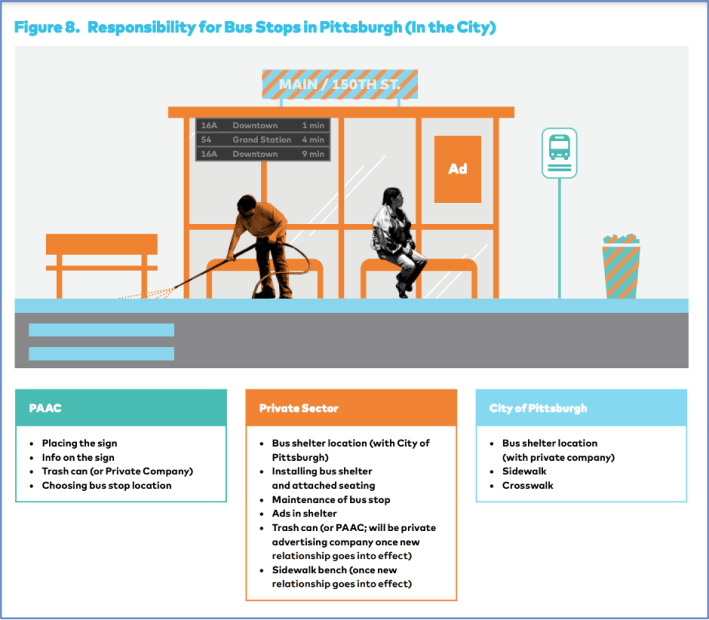
But even agencies that do take charge of their bad bus stops may face another challenge: losing track of waiting areas that are off the beaten path.
"A really important thing that not all transit agencies have is just a simple, good database of all of their bus stops," laughs Buchanan. "Sometimes this information is stored in drawings or PDFs, rather than in one searchable place. Without that, it's too easy to say, 'oh, we kinda forgot we had that one,' or 'oh, whoops, nobody’s been over to mow that one stop in Staten Island for months.'" (Representatives from the New York City DOT did not respond to a request for comment on this stop's inclusion in the contest; maybe they're still looking for it.)
And then there's the thorny question of how to make sure that the street leading up to the stop is accessible and safe. The Canadian Catastrophe's location on a high-speed industrial-sector highway with no sidewalk is no doubt a big part of why it won so many votes (as well as why it won a boatload of media attention from the French Canadian press.) Jackie Smith, who helped demonstrate just how unsafe the westbound stop was when she modeled for the photo below, said that getting to the stop is just as scary as it seems.
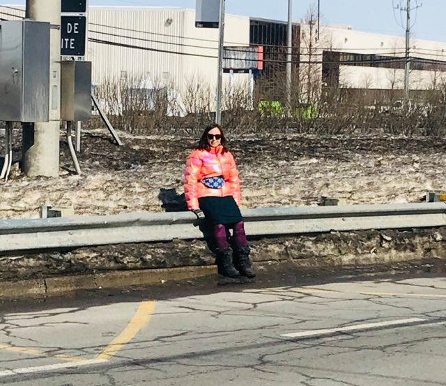
"Crossing the street felt like playing a deadly game of chicken," Smith said. "Once I got to the stop, I looked down and realized that my feet were actually in the (almost) brand new and poorly maintained bike lane. It really struck me, the absurdity of making pedestrians, cyclists, and buses duke it out for this one little corner when more than half of city space is dedicated to cars. I have the strong impression that the person that planned this bus stop has never stood at this bus stop, or at least not in the winter."
(Side note: as fabulous as Jackie looks here, she isn't just a professional bus stop model — she's also running for mayor of Québec City this year, and after some initial hesitation about "publicly shaming the city [she] love[s] so much," she's used the momentum from this contest to continue the conversation about how all the sorry bus stops in La Métropole might be improved; stay tuned for more info on the "Sorriest Bus Stop in Quebec City" contest when we announce the winner.)
Staten Island isn't doing so hot when it comes to stop access, either. Though the Murder Shed recently got a small concrete pad to help riders get out of the weeds, it seem to didn't merit even a basic sidewalk on the adjacent road.
Buchanan says that's a phenomenon that's all too common at the sorriest stops across the country, thanks in part to poor communication between transit agencies and the transportation departments that build our roads.
"One of the big findings from the report was that when there’s a breakdown in communication between [transit and transportation] agencies, the impact on the rider is huge," said Buchanan. "A lot of the employees at transit agencies who we spoke to didn't even know who their counterparts in the DOT were. That means they often don't hear about it when the DOT is doing work on the road adjacent to a stop that the transit agency could tag on to [as it works to] increase stop access. That just makes no sense."
We can probably all agree that both of these sorry stops are pretty nonsensical — but it's up to you to decide which one should take home the title of the sorriest stop on the continent.
Which has your vote: a French Canadian fracas on a 50 kilometer (30 mph) highway with no sidewalk that gives more space to an inflatable puppet than its riders? Or a New York nightmare on an ostensibly slow street with a scary "shelter" that no one in their right mind would go near?
Polls are open until Friday, April 16 at 4 p.m. Eastern time. Spread the word and please send your comments to tips@streetsblog.org! We'll have full coverage next week.
[poll id="187"]
Read More:
Stay in touch
Sign up for our free newsletter
More from Streetsblog USA
Friday’s Headlines Are Down on Highways
Two outlets recently featured articles on the harmful effects of ongoing freeway projects.
Commentary: There is Zero Ambiguity to the West Portal Tragedy
What happened in West Portal was entirely predictable and preventable. The city must now close Ulloa to through traffic and make sure it can never happen again.
Talking Headways Podcast: Details of Development Reform in Minnesota, Part I
Jim Kumon of Electric Housing discusses his work as a developer and urban policy educator in the Twin Cities.
Thursday’s Headlines Don’t Like Riding on the Passenger Side
Can you take me to the store, and then the bank? I've got five dollars you can put in the tank.
Study: When Speed Limits Rise on Interstates, So Do Crash Hot Spots on Nearby Roads
Rising interstate speeds don't just make roads deadlier for people who drive on them — and local decision makers need to be prepared.




